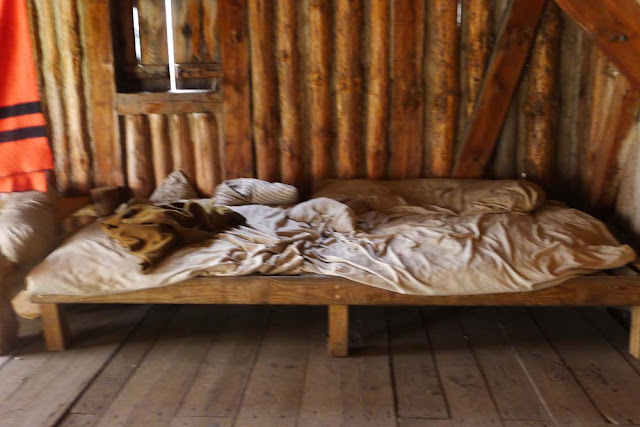 |
| Fort Stanwix, New York, just east of Syracuse was the most western fort on the frontier in 1777 |
Saturday, August 13, 2011. KABOOM! (re-enactor) Loyalists and British soldiers shot off their canons against those pesky, rebel, tax-evading Colonists at
Fort Stanwix. Luckily for the Colonists, those puny iron canon balls bounced off the fort walls, inflicting no damage at all. Our commanding officer, British
Brigadier-General Barrimore St. Leger, guzzled local rum while he waited for reinforcements, ammunition, and heavier canons with bigger canon balls to blow up the fortifications. Sadly for him, they never arrived.
Re-enactors exhibiting big bang, little impact.
 |
| See the fort in the background |
The British side was more rag-tag than we imagined: Scots and Welsh from Canada mixed with Loyalist settlers who all let themselves be bossed around by the King's men.
 |
The dashing officer (re-enactor) Dan Umstead explained that his soldiers slept 4 to 5 men in a modest wedge tent, spooning on the ground. If one man turned, everybody turned. If one man had lice, everyone caught it. War was stinky and itchy.
After a few hours of bombardment, we were hot, hungry, tired, and our British side was clearly losing, so we quit. It seemed a good idea to change sides and join the Colonists inside the fort. |
 |
| Inside the fort, the Big Man on Campus is the Sutler. (Think "Private Benjamin" with a profit motive). His job involves buying a lot of stuff and selling it to the soldiers. Big on vices, he sells rum, playing cards, pipes, and tobacco. He also sells good, warm animal skins, which he procures from the Indians by paying them with Dutch or Venetian glass beads. |
 |
| A Polish immigrant who followed General George Washington into war. |
 |
Officer's quarters. If a soldier was poor, his wife and children might have to be "camp followers", living just outside the fort walls in a tent pitched in the trenches.
 |
Samantha, a Native American basket weaver
 |
the Cooper's Workshop
|
Once the 13 Colonies declared victory, many wonderful restaurants opened. We ate an extraordinary lunch at CIRCA, 40 minutes away from Fort Stanwix, in the charming village of Cazenovia. Chef-owner Alicyn Hart is a conscientious practitioner of the slow food movement, i.e., locally sourced purveyors featured in a superb seasonal menu. She also sells some of the farmer's products in the her restaurant: fresh butter, peaches, apricots, locally raised and butchered pork, freshly pressed juices. You can find Circa at 76 Albany St., Cazenovia, New York, www.circarestaurant.net, tues-sat 11-10. Check with Circa for special Hog roast Sunday nights.
We loved this delicate house-cured gravlax sandwich on home made wheat bread with freshly made potato chips. |
Tabbouleh intermingled with carrots, string beans, tomatoes, pea tendrils
cheese plate made with a perfectly chosen local New England cheeses
Vital information: these glorious Falls are home to the endangered hermaphrodite Chittenango snail. He/she feeds on the algae in the spray zone of the waterfall and the species has been here a lot longer than any of us.
After experiencing so much great history, natural beauty and good food, I am sad to say the film has been shut down and we are all heading home!
|






















































